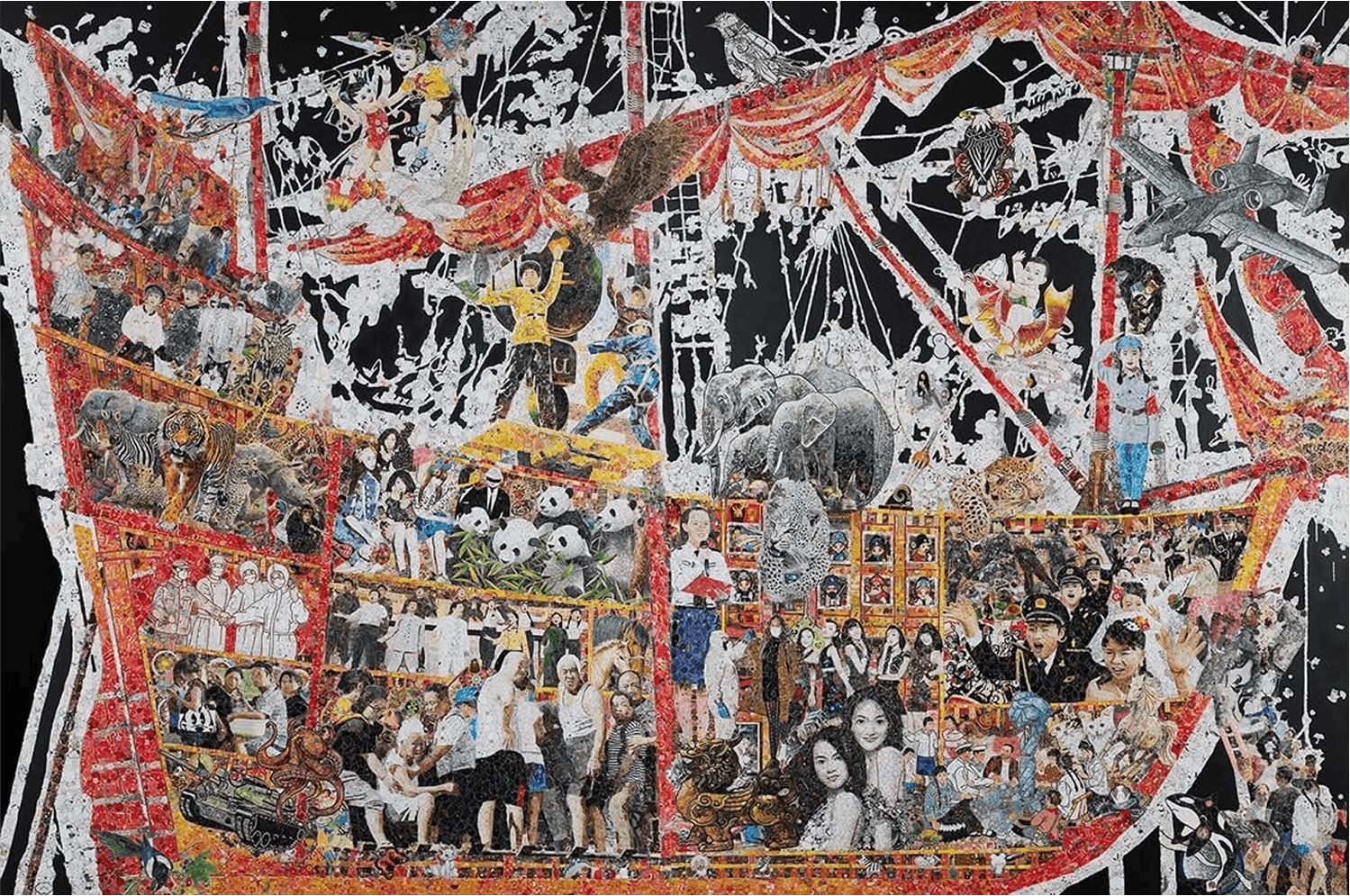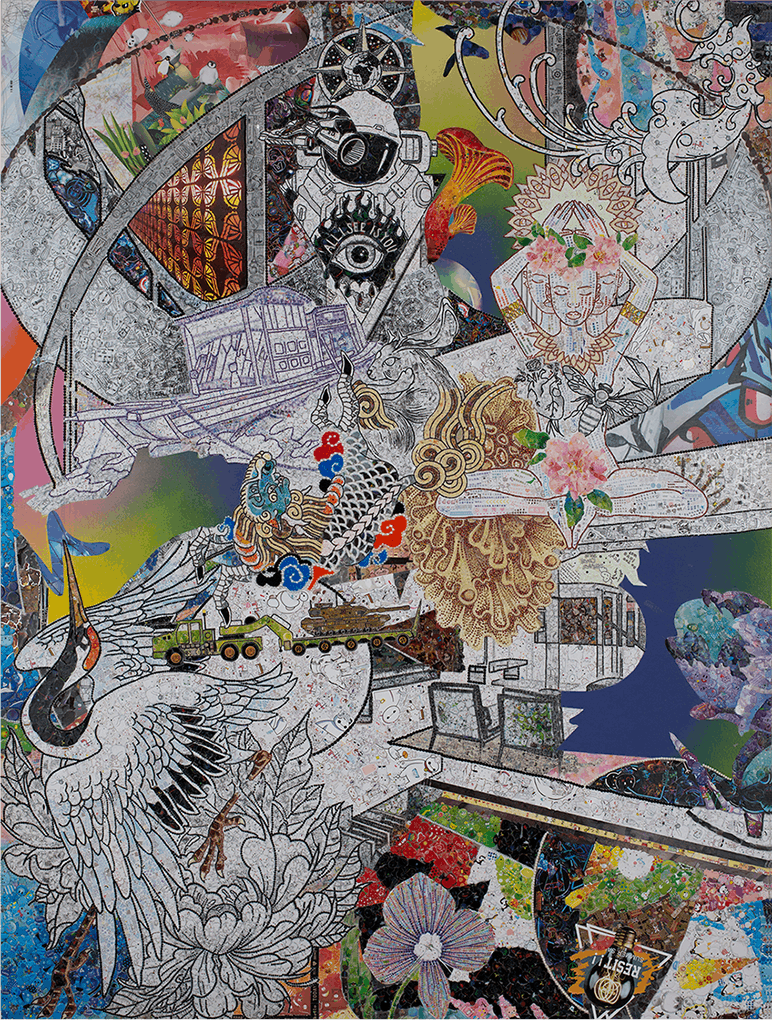
Ye Hongxing, Tiger, 2014, Stickers on canvas, 12 x 8 in
Stickers are everywhere. On water bottles, laptops, notebooks, car bumpers—stickers are cheap, cheerful, and easy to ignore. But in the hands of Ye Hongxing, they become something else entirely: dense, intricate worlds that compress the noise of contemporary life into tightly packed surfaces.
Hongxing started working with stickers in 2009, collecting them from Chinese street markets and later from places like Michaels and Hobby Lobby. These weren’t chosen for prestige—they were chosen because they were everywhere. Pop icons, cartoon bunnies, glitter bombs, military symbols were fragments of innocence and violence. Each piece begins with the everyday, but ends somewhere dreamlike. Since then, she has used stickers to explore Eastern and Western themes of consumerism, pop culture, and humanity’s relationship to the natural world
In Red Boat, one of her most arresting works, all these elements collide: people, animals, war machines, advertisements, and mythological references. It’s a portrait of 2022 in China—but more than that, it’s a snapshot of any society overwhelmed by spectacle. The surface feels celebratory, almost joyful, but stay with it and the weight starts to settle in. It’s beautiful. And uneasy.

Ye Hongxing, Red Boat, 2022, Mixed media on Canvas, 79 x 118 in

Ye Hongxing, Dream World No. 24, 2014, Crystal sticker collage on canvas, 120 x 160 cm
Hongxing’s work never preaches. It builds tension through material. The closer you get, the more it pushes back. As she puts it, “The fragmented composition of stickers reinforces the virtual and disjointed characteristics of my pieces.” That disjointedness isn’t just a visual effect—it’s a reflection of how it feels to be alive now, surrounded by images, stories, brands, and noise, all at once.
What makes her work linger isn’t just its visual density, but its emotional layering. It’s playful, yes—but it’s also dead serious. It captures how culture filters into our bodies, how beauty can feel violent, how attention itself becomes political. And it does all this with the most disposable materials imaginable.

Ye Hongxing, Substitution No. 3, 2021, Mixed media on Canvas, 63 x 47 in

Ye Hongxing
Born- 1972, Guangxi, China Lives and Works- San Diego, CA Education- Graduated from Art Department of Educational Academy in Guilin, Guangxi; Graduated from Printing Department, Central Fine Art Academy, Beijing. Exhibitions (selected): 2017 - Prajñāpāramitā Ye Hongxing - Solo ExhibitionThe opposite houseBeijing; 2015 - The Dazzling World Of Ye HongxingArtLexingMiami; 2014 - The Fantasy Factory Ye Hongxing - Solo ExhibitionArt+ShanghaiShanghai; 2014 - Ye Hongxing - Solo ExhibitionZee Stone GalleryHongKong; 2013 - East of Eden, Ye Hongxing Solo ExhibitionScreamLondon
